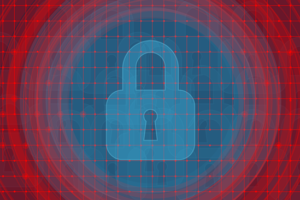Ransomware: What board members should know and what they should be asking their technical experts

Ransomware is the subject of this spotlight topic for board members, building on the guidance given in the Cyber Security Toolkit for Boards.
The impact of a ransomware attack on an organisation can be devastating. So what should board members be doing to ensure that their organisation is prepared for such a ransomware attack, and in the best possible place to respond quickly ?
This blog, part of the Cyber Security Toolkit for Boards, explains the basics of ransomware, and suggests relevant questions that board members might want to ask their technical experts to help drive greater cyber resilience against these types of attack.
Why should board members concern themselves with ransomware?
Cyber security is a board-level responsibility, and board members should be specifically asking about ransomware as these attacks are becoming both more frequent[1] and more sophisticated.
Ransomware attacks can be massively disruptive to organisations, with victims requiring a significant amount of recovery time to re-enable critical services. These events can also be high profile in nature, with wide public and media interest.
What do board members need to know about ransomware?
Board members don’t need to be able to distinguish their Trickbots and their Ryuks, but knowing the basics of how ransomware works will mean they can have constructive conversations with their technical experts on the subject.
So what do you need to know about ransomware?
- Ransomware is a type of malware that prevents you from accessing your computer (or the data stored on it). Typically, the data is encrypted (so that you can’t use it), but it may also be stolen, or released online.
- Most ransomware we see now is ‘enterprise-wide’. This means it’s not just one user or one machine that is affected but often the whole network. Once they’ve accessed your systems, attackers typically take some time moving around, working out where critical data is saved and how backups are made and stored. Armed with this knowledge the attacker can encrypt the entire network at the most critical moment.
- The attacker will then usually make contact with the victim using an untraceable email address (or an anonymous web page), and demand payment to unlock your computer and/or access your data. Payment is invariably demanded in a cryptocurrency such as Bitcoin and may involve negotiation with the humans behind the ransomware (who have spent time in your organisation’s networks assessing how much you might be willing or able to pay).
- However, even if you do pay the ransom, there is no guarantee that you will get access to your computer, or your files.
- We have also seen cyber criminals threaten to release sensitive data stolen from the network during the attack if the ransom is not paid.
- The government strongly advises against paying ransoms to criminals, including when targeted by ransomware. There are practical reasons for this (see question 4) and also concern that paying ransoms likely encourages cyber criminals to continue such attacks.
Full details at https://www.ncsc.gov.uk/blog-post/what-board-members-should-know-about-ransomware

